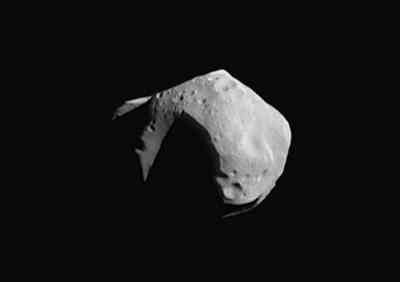A cluster of at least three asteroids between 20 and 50 kilometers long that collided with the Earth more than 3.2 billion years ago caused a massive change in the structure and composition of the Earth's surface
Amit Oren

A cluster of at least three asteroids between 20 and 50 kilometers long that collided with the Earth more than 3.2 billion years ago caused a massive change in the structure and composition of the Earth's surface. This cluster occurred long after the formation of the Earth, after the solar system had already calmed down. This is according to a new study conducted by KDA scientists from the Australian National University (ANU - Australian National University). According to Dr Andrew Glikson and John Vickers from ANU's Department of Earth and Ocean Sciences, the collision of these asteroids caused massive earthquakes, volcanic eruptions and deep magmatic activity, and disrupted the development of parts of the Earth's mantle.
The study expands on the original discovery of layers created as a result of collisions from outer space, discovered in South Africa by two American scientists, D. R. Lowe (Lowe) and c. R. Byrely, in identifying their effects in the Pilbara region of Western Australia.
"Our findings are further evidence that the seismic shocks of these massive collisions brought about the sudden end of a development phase of more than 300 million years dominated by basaltic volcanic activity and prolonged growth of granite plutons," says Dr. Glikson.
Identification of collision emissions - materials emitted by the impacting asteroid - is based on isotopic and chemical compounds and special minerals identified as a source from outer space, including iridium anomalies.
The impact output from the Barberton area in the eastern Transvaal indicates the formation of impact craters several hundred kilometers in diameter in oceanic areas of the Earth, parallel to the lunar "marine" craters (large dark imprints on the surface of the moon). The seismic impact of the impact included vertical displacements of plates, exposure of deep granites and the onset of terrestrial conditions in part of the surface of the Earth.
"The exact coincidence of the fault and the volcanic activity with the collision layers, in its context with the sharp break between the basaltic mantle and the continental formations, sheds new light on the role of asteroid impacts in the development of the continents," says Dr. Glikson.
Early signs suggest that around the same time the Moon was also affected by an asteroid impact and the revival of volcanic activity. Glickson and Vickers will continue to investigate the extent and effects of large asteroid impacts by investigating ancient surfaces in other parts of the world, including India and Canada.
For the original news on the news site of the Australian National University website
For the news in Universe Today
